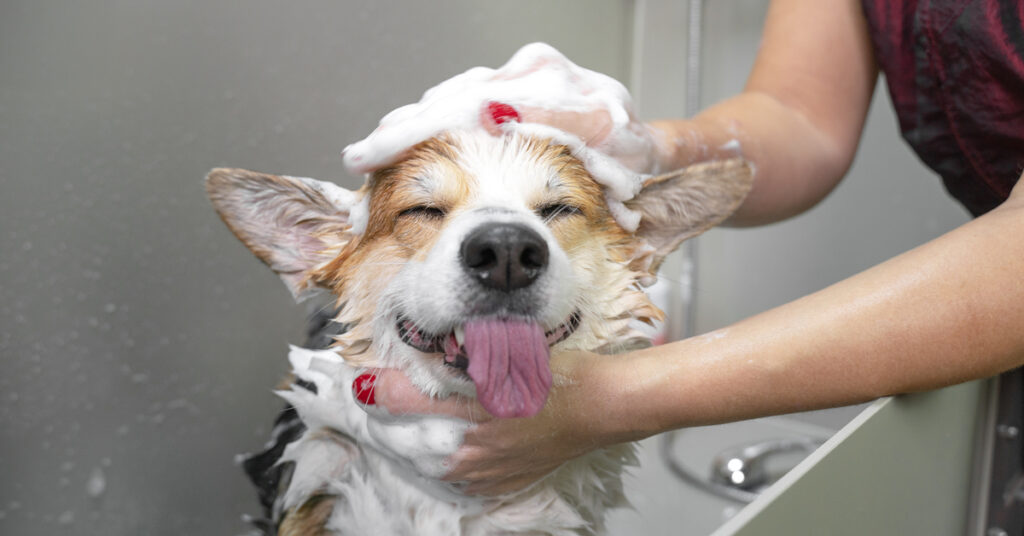Best Veterinary Client Communication Tips for Your Practice
You have a thriving veterinary practice with a steady stream of patients coming through your doors. It can be easy to get caught up in your daily schedule and miss some details. From the moment they set an appointment to the moment these adorable pets are returned to their pet parents. Ensuring client satisfaction with your practice is always a priority.
We have prepared some of the best client communication tips to help your team provide quality services.
So let’s refresh our memory, what is client communication anyways? In a nutshell, any interaction with your clients can occur in person, over the phone, or via the internet. Today, establishing clear communication online is especially essential across multiple channels like social media, your website, or email.

Once a client posts a negative review about bad customer service for hundreds to see, it’s time to do some evaluating. Oftentimes, a lack of communication has ripple effects on your practice’s daily interactions with your clients.
As Hubspot’s top-ranking executive Mark Kilens once said, “It’s not what you say, but how you make customers feel, that creates lasting relationships.” If you want to foster a loyal customer base, you need to be strategic in all your communications efforts.
Ask For a Review After a Visit
Nowadays, it’s important to note how valuable your online reviews have become for your practice. In order to successfully grow and attract new clients in your area, you’re going to want to devote some time to checking your reviews.
Having a reputation management strategy is one of the key elements for effective veterinary communication. Reputation management is an available marketing service that aims to monitor your practice’s online reputation.
Each client experience or interaction represents a chance to elevate your veterinarian practice. You want to always encourage your clients to leave your practice a review online. You can instruct your receptionists to ask clients to leave an online review. Your team can provide clients with instructions on how best to leave some feedback after a visit.
There are a variety of ways to obtain reviews. The easiest and simplest service would be Google Customer Reviews. These reviews and ratings appear any time your practice appears in potential client search results.
Check out popular mobile apps like Yelp. Make a profile for your practice and encourage pet owners who come in for grooming services to leave a review and add an adorable picture of their pet.
Additionally, create email blasts to your current clients to submit surveys that you and your team use for evaluations. Provide your clients with some incentive to fill out these surveys by offering gift cards, coupons, or a sales offer on a particular service.
The important takeaway is that in today’s digital landscape you want to have a flow of reviews coming in so you and your team best pinpoint daily communication issues. The more information you have the better chance your practice has at resolving client communication issues effectively.
Prepare Your Team To Respond to Feedback

The way your practice responds to each evaluation can have a significant impact on your practice’s online reputation.
For example, you’re bound to encounter anxious clients about pet care, especially if their pets have serious issues.
Let’s say someone in your staff overbooked the day and there are no cancellations. Any single appointment that takes much longer than initially anticipated can have ripple effects on the rest of the day. At some point, one of the incoming pet owners may feel their needs with their pet were neglected. You can even end up mishandling a case when critical information is overlooked. These are the scenarios where negative reviews can easily arise.
How you engage negativity online can impact how possible new clients perceive your veterinary practice. Think of it this way, turn a bad review into an opportunity to mend bridges by apologizing and proactively listening to what your clients have to say about your business. The way you handle these exchanges illustrates how much your veterinary practice values the affairs of every customer.
If you don’t address clients’ comments in a timely manner, your reputation might get affected. Other clients may perceive that your practice doesn’t value your client experience. In turn, a possible new client might instead opt for other professionals that can help them with their veterinary needs.
Thank Your Client’s for Positive Reviews Too
In contrast, positive reviews drive new clients to your veterinary practice. You can cross-post the positive feedback you garner from former and current clients to give your business a boost. By sharing these kind words on social media about your practice, you’re demonstrating how your practice is actively communicating with clients. You should have clients’ informed consent whose testimonials will be posted online.
Addressing a positive review is relatively easy. Send the client that left your practice a positive review a thank you for their kind words. Make a note about how your team strives to provide excellent quality services or whatever services they mentioned in their review. Shout out a further appreciation post for your dedicated team in the office or a stand-out staff member.
Handling conflict is not easy, so it’s crucial your team members undergo client communication skills training. Sp your team is ready to address your customers’ concerns at all times. It’s even encouraged to respond to messages as they come. Team members should watch their body language and nonverbal cues to ensure that they appeal to each client with sympathy and professionalism. Their positive experience reinforce’s how you prioritize client satisfaction.
Key Communication Tips To Try:
It has become a common issue for any business today to deal with negative reviews. Dealing with negativity online can be challenging. However, don’t worry too much you can turn the situation around with a little bit of strategy.
Address the reviewer: First of all, it’s crucial that you acknowledge every negative review. Your clients want to be addressed individually, and that’s why you should ensure that you call each pet owner by name instead of using generic terms like ‘dear customer.
Say thank you: Your veterinary team members must be gracious with their response to the client’s concern. However rude or unflattering the review may be, you must thank them for bringing to light their concern with sincerity. The client’s position should be dealt with with care and finesse.
Apologize and sympathize: Humility is the key when you’re dealing with an unhappy customer. Even if your veterinary practice is not at fault, say sorry anyway. When practices appear too proud or unapologetic to clients, people often get turned off. Remember that you’re not just addressing an unsatisfied client; other possible clients also see how you deal with difficult situations.
Take responsibility: Your veterinary practice should not make excuses for what happened. Acknowledge the customer’s experience. At the same time, you should show the pet owner how your practice holds itself to the highest standard, which is why their satisfaction is your priority.
Make things right: When dealing with difficult situations, avoid cookie-cutter responses that don’t address the issue the client brought up. Instead, detail your next steps to improve your services. Honor your client’s negative experience with a coupon or discount on services. Always ensure that you communicate that your practice will consider their feedback in the future.
Talk offline: To discuss the issue in detail, you should reach out to the unsatisfied customer to fix the issue. Some details should be left out of the public space, and you should resolve the problem directly with the client. You may ask for their schedule for a call to discuss the matter.
Ask for another chance: To show how much your veterinary practice values each client, invite your unsatisfied client to come back to your practice. And promise them their next experience will be much better. This way, you can prove how much you appreciate their business and that you’re dedicated to improving a veterinary practice.
Start an E-newsletter
Starting an electronic newsletter or e-newsletter is an excellent way for your veterinary team to deliver news and insightful stories to patients. An e-newsletter is a modern email strategy used to generate client leads and foster a loyal patient base.
By using this communication channel you get consistent engagement from your current clients. Newsletters are a fantastic way to create valuable content that will interest your patients.
Getting started is very easy. Your veterinary team should make time to send updates to your client base on an ongoing basis. Clients should receive a steady flow of information from your team instead of only hearing from you once a year.
Start by using the email address list of your current and former clients to send them regular updates on your services and promos. You can also invite pet owners who visit your website to subscribe to your e-newsletter to stay up-to-date with news about your veterinary care practice.

Make every email blast count. An e-newsletter is an excellent platform to share exciting information about veterinary care and, of course, for client education. You wouldn’t want your clients to skip reading your emails, so you must share things that they may find valuable.
Like social media, newsletters are a great way to have a narrative with pet owners. While it’s recommended to keep captions concise yet compelling on social media. Opt to go into detail about your services and other possible topics of interest through e-newsletters. You can even get creative by including lively and fun visuals to support your emails.
The goal is to promote awareness and pet education to your clients. These newsletters can answer patients’ most common questions. Saving you and your team more critical time in the office.
You want simple and easy-to-read headlines in each email blast sent. Plus be playful with your email subject lines you are a veterinary practice after all. In short, the content of a newsletter can be informative yet engaging.
Sending Thank-You Emails and eCards
Your company email is not just for sending e-newsletters to your clients. You can use emails as an effective marketing tool to drive more sales to your business. A simple thank you email gives your patients a positive experience. At the same time, it shows how you value them trusting your practice.
Make sure you have automated thank you emails ready every time a client visits your veterinary practice. When clients fill out your online form, make sure they provide their email address and visit details so that it can easily be transferred to your database.

The way you design each thank you email or eCard should mirror your clinic’s personality. So don’t be afraid to insert fun elements like a cute pet picture or emojis. The email should put a smile on the recipient’s face.
Aside from showing gratitude, thank you emails are an excellent opportunity to build practice loyalty and customer engagement. You can forge stronger relationships with clients by showing that you care about them and their pets.
ECards are not just limited to your current clients. Send them to prospective clients in your area. This is your chance to make these possible clients understand what your clinic does. As well as how dedicated your team is to providing quality services to adorable pets in your neighborhood.
Update Your Patients Via Social Media

First off, make sure your practice has a presence on popular social media platforms like Facebook, Instagram, and Google My Business. Then focus on using these platforms effectively to communicate with your local pet owners.
With over 2.9 billion users worldwide, Facebook is the largest social media website. Facebook is an excellent platform to raise awareness about your veterinary practice. In addition, drive traffic to your veterinary website and educate clients about your practice.
Through Facebook, your veterinary team effectively communicate’s necessary details to potential clients. These include business hours, addresses, contact information, and upcoming events. More often than not, people do quick searches on Facebook before visiting a physical clinic, so your Facebook page must be updated and proactive.
Another popular platform your veterinary clinic should take advantage of is Instagram. This particular social media platform is all about visuals. It’s the ideal client communication channel to capture the work your practice is doing every day.
Through Instagram, share what goes on behind the scenes with your team. Such as the new pets on their first visit to show how your team values patient care. You can also explore showing off your exam room so clients see what they can expect once they visit your clinic.
Keep Your Contact Information Updated
One social media platform most veterinary teams don’t maximize is Google My Business. It might just be the most critical client communications platform you’re not using to your advantage. This platform is where new clients within your area can search and find your practice on Google.
What’s great about Google My Business is it helps your practice’s online visibility so much. Make sure that critical information such as your address, website, operating hours, and services are specified and up-to-date in the business listing.
The information you share on your website is just as crucial as the information you list on other various digital marketing channels like social media and online directories. There is more than one way to search for veterinary practices online, and your job is to ensure all the information on your practice is accurate and up-to-date. This is crucial, significantly if you’ve changed addresses or operating hours.
In addition, make time to check your veterinary practice’s ranking on Google. The goal is to appear on the first page of search results. If you’re not on the top results, you miss opportunities for new client’s to find your practice.
Read On: How to Claim Your Google My Business Listing
Get Help with Digital Marketing
Developing effective veterinary communication skills doesn’t happen overnight, but with time and practice, you can improve your clinic communication skills. Fortunately, you don’t have to venture into client communication alone.
Through VetMatrix, take your client communication to the next level. We equip you with all the communication tools you need to manage your clients in a timely manner. Our mission is to ensure you’re ready to address clients through various digital marketing platforms. Contact us to get a website that is tailored to your practice. If you need help getting set up, call us at 800.792.8384 or click here.



